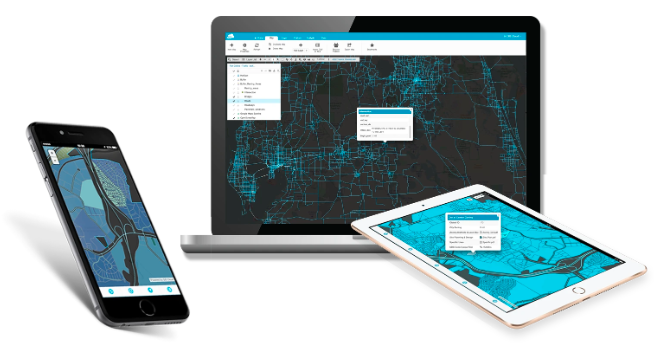By Shahabuddin Amerudin

In an age where data is king, and technology continues to shape the way we interact with our world, there’s a field of study that’s becoming increasingly vital and promising: Geoinformatics. For students with a passion for programming and system/application development, pursuing a degree in Geoinformatics can open doors to a world of exciting career opportunities and a future that’s anything but ordinary.

Geoinformatics: Where Geospatial Meets Technology
Geoinformatics is an interdisciplinary field that bridges the gap between geospatial and technology. It harnesses the power of Geographic Information Systems (GIS), remote sensing, data analysis, and programming to understand and solve complex spatial problems. With a foundation in both geospatial and technology, graduates of Geoinformatics programs are well-equipped to tackle real-world challenges in various industries.

The Career Path of a Geoinformatics Enthusiast
For students who excel in programming and system/application development during their Geoinformatics studies, the career paths are diverse and filled with promise. Let’s explore some of the exciting avenues available to them, along with examples of technologies they can master along the way:
1. GIS Developer/Programmer: GIS developers and programmers create software applications, tools, and systems that leverage geospatial data to address complex problems. They might work with platforms like Esri ArcGIS or open-source solutions like QGIS. Proficiency in programming languages like Python and JavaScript is essential, as it enables them to develop custom geospatial applications and interactive mapping tools.
2. Spatial Data Analyst: Spatial data analysts specialize in collecting, processing, and interpreting geospatial data. They use tools like MySQL and PostGIS for spatial database management and Python for data analysis. Visualization libraries such as Matplotlib and D3.js help them create insightful 2D visualizations of spatial data.
3. Remote Sensing Specialist: Remote sensing experts work with satellite and aerial imagery to gather information about the Earth’s surface. They utilize software like ENVI or open-source tools like SAGA GIS and GRASS GIS for image processing. Proficiency in Python and machine learning frameworks like TensorFlow allows them to extract valuable insights from remote sensing data.
4. Geospatial Software Engineer: These engineers focus on creating software tools and applications tailored to the Geoinformatics domain. They may use integrated development environments (IDEs) like Visual Studio Code or PyCharm for efficient coding. Languages like Java and C++ are often employed for building high-performance geospatial software.
5. Urban Planner or Environmental Consultant: Geoinformatics professionals in these roles aid in city planning, environmental impact assessments, and sustainable development projects. They might employ proprietary software like Autodesk AutoCAD or open-source solutions like QGIS to analyze and visualize data relevant to urban planning.
6. Geospatial Project Manager: Project managers oversee geospatial projects from start to finish, ensuring they are completed on time and within budget. Tools like Jupyter Notebook facilitate data exploration and project management. Visualization platforms like Tableau help in creating geospatial data dashboards for project tracking.
7. Academic and Research Career: For those inclined towards academia and research, pursuing advanced degrees can lead to careers as professors, researchers, or scientists in Geoinformatics-related fields. These professionals drive innovation and contribute to the growth of geospatial knowledge, often leveraging technologies like Hadoop and Spark for big data analysis.
8. Entrepreneurship: Entrepreneurial-minded individuals can establish their geospatial consulting firms, software development companies, or data analytics startups. They can harness cloud platforms like AWS, Google Cloud, or Azure to build scalable geospatial solutions.
9. Government Positions: Geospatial Officers, as per the description provided by the official website, are in high demand across various government agencies and departments. Their primary responsibility revolves around the creation of electronic maps, thematic maps, as well as limited and extensive topographic maps. These maps are essential for both government and public use, serving various critical purposes such as national defence, fostering national development, efficient resource management, supporting educational initiatives, and facilitating administrative functions. Furthermore, Geospatial Officers play a pivotal role in the management and analysis of spatial data, which is instrumental in shaping public policies, responding effectively to disasters, and planning infrastructure projects. In fulfilling these responsibilities, they often rely on specialized software solutions like Esri ArcGIS to streamline their operations and ensure the highest levels of accuracy and efficiency.
10. Innovation and AI/ML: As geospatial data becomes increasingly complex, professionals in this field can leverage innovations in artificial intelligence (AI) and machine learning (ML). Technologies like TensorFlow, PyTorch, and scikit-learn enable Geoinformatics experts to apply ML algorithms to spatial data for predictive modeling and pattern recognition.

The Promising Future of Geoinformatics Graduates
As we look to the future, the prospects for Geoinformatics graduates with programming and system/application development skills are incredibly bright. The demand for professionals who can harness geospatial data and develop innovative solutions continues to grow across industries. Moreover, the fusion of Geoinformatics with emerging technologies such as artificial intelligence, blockchain, and the Internet of Things (IoT) opens up new frontiers for innovation and career growth in the field.
In conclusion, Geoinformatics is a field that marries the age-old fascination with geospatial to the cutting-edge world of technology. For students who are passionate about programming and system/application development, a degree in Geoinformatics can be a ticket to a fulfilling and promising career that addresses some of the world’s most pressing challenges. As our world becomes increasingly interconnected, the skills and expertise of Geoinformatics professionals will continue to be in high demand, shaping a future where data-driven decisions drive progress and sustainability. Mastering the array of tools and technologies mentioned here will undoubtedly empower Geoinformatics graduates to thrive in this dynamic and evolving field.
Suggestion for Citation: Amerudin, S. (2023). Navigating the Digital Frontier: A Bright Future for Geoinformatics Graduates. [Online] Available at: https://people.utm.my/shahabuddin/?p=6996 (Accessed: 5 September 2023).

